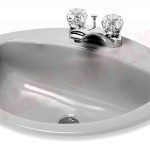48 Inch Bathroom Vanity Dimensions In Inches: A Comprehensive Guide
The 48-inch bathroom vanity represents a popular choice for homeowners seeking a balance between storage space and footprint within their bathroom. Its dimensions offer a significant upgrade from smaller vanities while remaining manageable for most standard-sized bathrooms. Understanding the nuances of these dimensions, including height, depth, and variations within the 48-inch width, is crucial for making an informed purchase and ensuring a successful installation.
This article provides a detailed examination of the typical dimensions of a 48-inch bathroom vanity, all expressed in inches, offering insights into the standards and common variations to aid in the selection process. Furthermore, the article will explore the importance of these dimensions in relation to bathroom design and accessibility.
Standard Dimensions of a 48-Inch Bathroom Vanity
The term "48-inch bathroom vanity" refers primarily to the width of the vanity cabinet. However, height and depth are equally important dimensions that impact functionality and aesthetics. Let's explore each of these dimensions in detail, expressed in inches.
Width: The defining characteristic of this type of vanity is its width, which typically measures around 48 inches. However, slight variations may exist. Some manufacturers might produce vanities that are slightly shorter or wider, perhaps by a fraction of an inch. When planning your bathroom layout, it is vital to obtain the exact width specification from the manufacturer's product details. Tolerances should also be considered, especially if installing the vanity between two walls. A variation of even a quarter of an inch could significantly impact the installation process.
Height: The standard height for a bathroom vanity, referred to as "comfort height," is typically between 34 and 36 inches. This height is intended to provide a more ergonomic experience for adults, reducing the need to bend over excessively while using the sink. However, traditional vanity heights, which are generally around 30 to 32 inches, still exist and might be preferred by some homeowners, particularly those with smaller children or those who prefer a more traditional aesthetic. The height measurement refers to the distance from the floor to the top of the vanity countertop. This height is crucial for ensuring comfortable use of the sink and preventing back strain.
Depth: The depth of a 48-inch bathroom vanity, measuring from the front of the cabinet to the back, typically falls between 18 and 22 inches. This depth influences the amount of storage space available within the cabinet. A deeper vanity provides more room for storing toiletries, towels, and other bathroom essentials. However, a deeper vanity also requires more floor space, potentially making a smaller bathroom feel cramped. The choice of depth should be carefully considered in relation to the bathroom's overall size and layout. The depth is also influenced by the type of sink used with the vanity. Undermount sinks generally require less depth than vessel sinks.
Factors Influencing Vanity Dimensions
Several factors can influence the specific dimensions of a 48-inch bathroom vanity. These factors include the style of the vanity, the type of sink used, and any custom features or modifications.
Vanity Style: Different vanity styles, such as floating vanities, freestanding vanities, and corner vanities, can have varying dimensions. Floating vanities, which are mounted to the wall, may have different height considerations than freestanding vanities. Corner vanities, designed to fit into a corner space, will have unique depth and width dimensions tailored to their specific configuration. The style of the vanity chosen will have a direct impact on the overall dimensions of the unit. Open-concept vanities, for instance, may have less depth because they prioritize accessibility over enclosed storage.
Sink Type: The type of sink integrated into the vanity also plays a role in determining the overall dimensions. Undermount sinks, which are installed below the countertop, typically require less countertop space than vessel sinks, which sit on top of the countertop. Vessel sinks, with their raised profile, can also add to the overall height of the vanity. Integrated sinks, where the sink is molded directly into the countertop, can offer a streamlined look but may limit dimensional customization. The thickness of the countertop material also affects the sink cutout dimensions and the overall appearance.
Customizations and Modifications: Custom vanities offer the opportunity to tailor the dimensions to specific needs and preferences. Homeowners can adjust the width, height, and depth of the vanity to accommodate unique bathroom layouts or storage requirements. Modifications, such as adding extra drawers, shelves, or specialized organizers, can also affect the internal dimensions of the vanity. When ordering a custom vanity, it is crucial to provide accurate measurements and specifications to the manufacturer to ensure a perfect fit.
Importance of Dimensions in Bathroom Design and Accessibility
The dimensions of a 48-inch bathroom vanity are critical considerations in bathroom design and accessibility. Careful planning is essential to ensure that the vanity fits comfortably within the available space and meets the needs of all users.
Space Planning: Before purchasing a 48-inch bathroom vanity, it is vital to measure the available space in the bathroom accurately. Consider the placement of other fixtures, such as the toilet, shower, and bathtub. Ensure that there is adequate clearance around the vanity for comfortable movement. Building codes often specify minimum clearances for bathroom fixtures, so it is important to consult local regulations. Creating a scale drawing or using a bathroom design software can help visualize the layout and ensure that the vanity fits properly.
Accessibility: For individuals with mobility limitations, accessibility is a paramount concern. Consider the height of the vanity and the ease of access to the sink and storage areas. A comfort-height vanity, typically around 34 to 36 inches, is often preferred for individuals who use wheelchairs or have difficulty bending over. Ensure that there is sufficient knee space under the vanity for wheelchair access. Lever-style faucets are also recommended for ease of use. ADA-compliant vanities are specifically designed to meet accessibility standards.
Storage Needs: The dimensions of the vanity directly impact the available storage space. Assess storage needs before selecting a vanity. Consider the amount of toiletries, towels, and other bathroom essentials that need to be stored. A deeper vanity will generally provide more storage space than a shallower one. Opt for vanities with a combination of drawers and shelves to maximize storage options. Internal organizers can further enhance storage efficiency. Open shelving can add visual interest and provide easy access to frequently used items.
Aesthetic Considerations: The dimensions of the vanity also contribute to the overall aesthetic of the bathroom. A vanity that is too large can overwhelm a small bathroom, while a vanity that is too small can look out of place in a large bathroom. Consider the proportions of the vanity in relation to the other fixtures and the overall size of the room. The style of the vanity should also complement the overall design aesthetic of the bathroom. The material, finish, and hardware of the vanity can all contribute to the overall look and feel of the space. The colour of the vanity should also coordinate with the other colours in the bathroom.
Installation Considerations: Accurate dimensions are crucial for a successful installation. Before installing the vanity, double-check the measurements to ensure that it fits within the designated space. Consider the placement of plumbing lines and electrical outlets. If necessary, relocate plumbing or electrical fixtures to accommodate the vanity. Use shims to level the vanity if the floor is uneven. Follow the manufacturer's instructions carefully during installation. Professional installation is recommended for complex installations or if you are not comfortable with plumbing and electrical work. Allowing for adequate space behind the vanity for plumbing connections is also an important consideration.

Wyndham 48 Inch Bathroom Vanity Without Top Bath Today S Design House

Elegant Lighting Vf 1040 Vw Bordeaux 48 X 22 36 Inch Brown Vanity Sink Set

Ktenme 48 Inch Bathroom Vanity With Dual Sink Soft Closing Door Easy Assembly Storage Cabinet For Small Space 47 6 X 18 3 34 Inches Com

48 Inch Dark Brown Traditional Style Single Sink Baltic Countert Chans Furniture

48 Inch Whitewashed Walnut Bathroom Vanity Top Options

Home Decorators Collection Doveton 48 In Single Sink Freestanding White Bath Vanity With Engineered Marble Top Assembled 48w The Depot

48 Inch Farmhouse Light Natural Oak Single Bathroom Vanity Unique Vanities

What Is The Standard Height Of A Bathroom Vanity

48 Inch Saddle Brown Single Sink Bathroom Vanity Quartz Top Unique Vanities

Home Decorators Collection Sedgewood 48 5 In W X 18 75 D 34 375 H Single Sink Bath Vanity White With Arctic Solid Surface Top Pplnkwht48d The Depot
Related Posts







